
Evgenia Kanaeva, two time Olympic gold medalist.
She stands elegantly, waiting for the music to start. Her hair is in a bun, eyeliner and eyeshadow applied to her face, and Swarovski crystals stud the leotard that hugs her body. In her hands, she holds a ribbon...
Rhythmic gymnastics. It’s arguably the most beautiful sport in the world. But it’s also one of the most unknown and under-appreciated, stuck in the shadow of its older and more popular cousin, artistic gymnastics – the sport with the bars, vaults, balance beams, and tumbling.
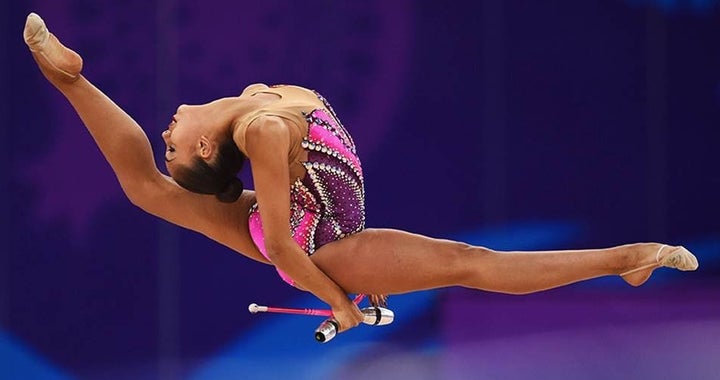
2016 Olympic Gold Medalist Margarita Mamun.
There are no flips or tumbling in rhythmic gymnastics. No bars or balance beams. It’s a more graceful and, well, rhythmic form of gymnastics. And for that reason, people either have no clue what it is or have a twisted image of it. Many say it’s nothing but a frilly, girly pastime that involves makeup, rhinestones, and glitter. They say it’s just dancing around with ribbons. That it’s not a sport.
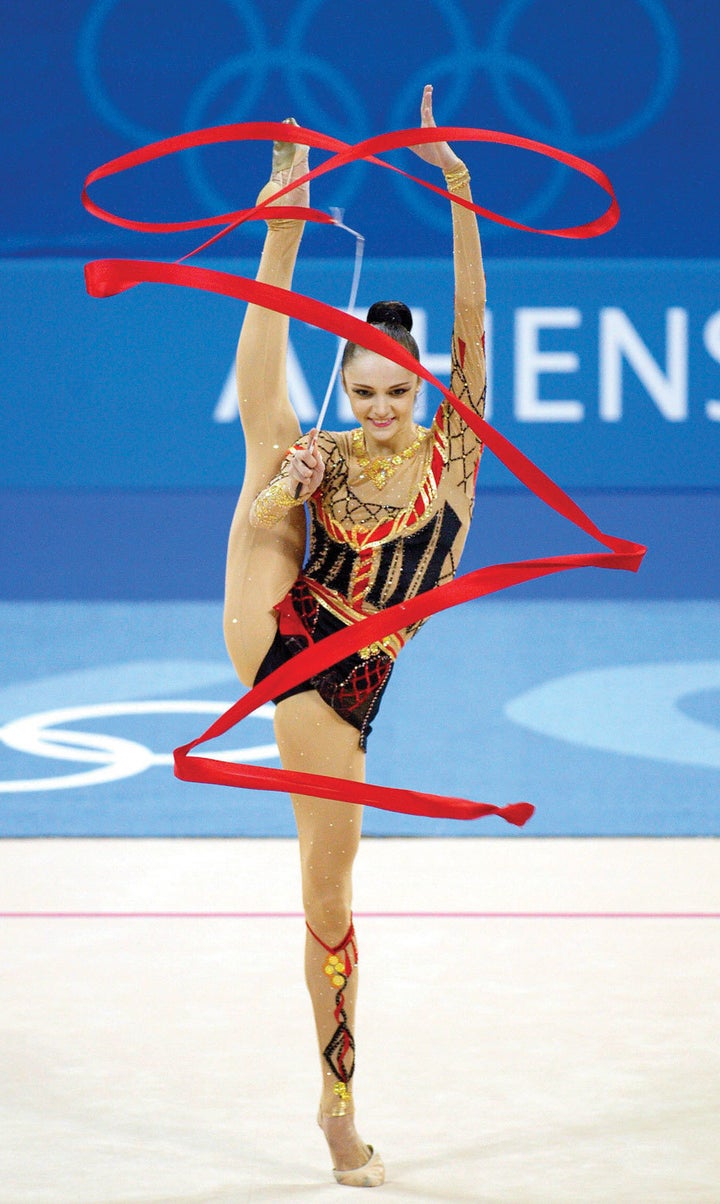
Well, I beg to differ. Rhythmic gymnastics is an official Olympic event, not a frou-frou hobby. Yes, when it comes to competitions the gymnasts do wear elaborate leotards studded with gems, and yes, they do perform with ribbons. But that’s the part that everyone sees. The rest – the training, what really makes up the sport – is hidden.
A rhythmic gymnast has to leap, turn, contort, and dance, all while manipulating and tossing different apparatuses, and all to the beat of the music. It isn’t easy, but rhythmic gymnasts have to make it look effortless. And that all starts with hours and hours of training and practice.
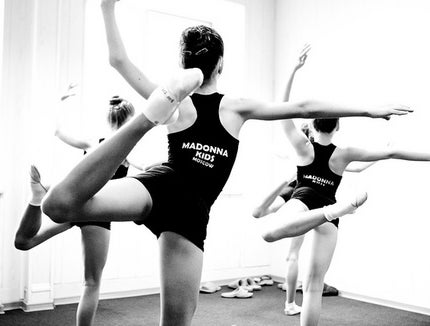
On average, professional rhythmic gymnasts train from 5-8 hours a day.
The gym is full of girls in leotards and dance shorts drenched with sweat. Bruises dot their legs and backs.
“Kick higher!”
“Come on, girls, point your toes!”
“Five more! Straighten your knees!”
These are the words of the coach, as the gymnasts go through painful, exhausting strengthening exercises. Kicking, extending, holding their bodies in different positions, trying to target and strengthen every muscle.
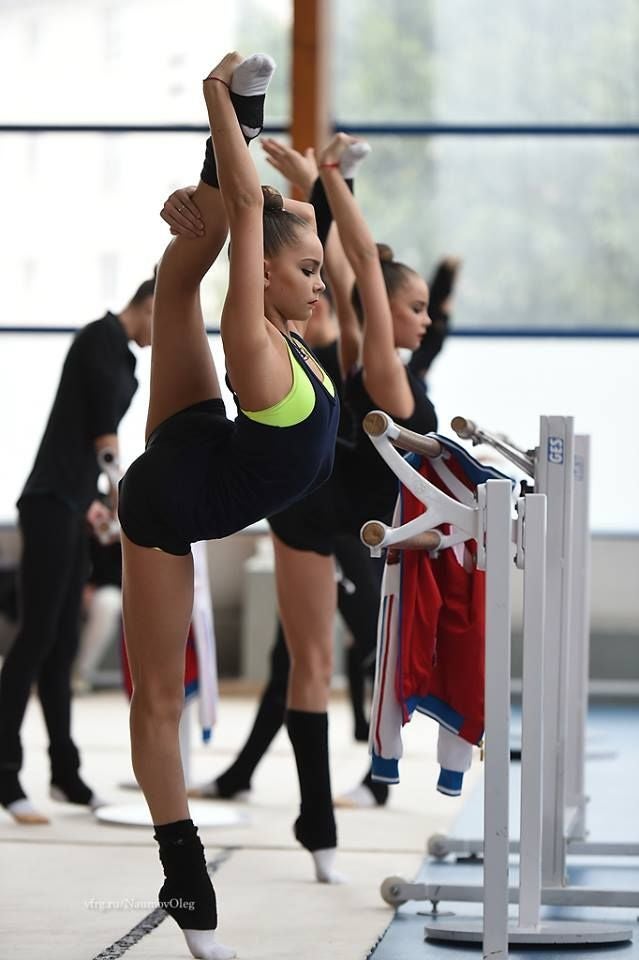
Dina and Arina Averina, two prominent Russian rhythmic gymnasts, training.
On top of being strong, a rhythmic gymnast must be incredibly flexible. Feet must curve and point, legs must be hyper-extended, backs must contort so much that they fold in half – at least that’s the ideal.
As for the legs? In order for rhythmic gymnasts to perform the intricate leaps they’re famous for, a regular split isn’t enough. It has to go beyond 180 degrees. This is achieved by stretching between two chairs, with one ankle on each chair, forcing the split to go further. The gymnasts grimace in pain, but they soldier through the stretches.
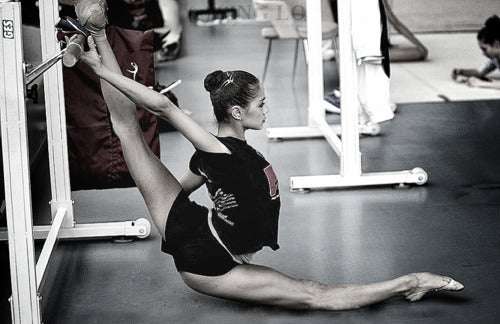
Extreme flexibility is essential to be competitive in professional rhythmic gymnastics.
And yet, these warriors are given virtually no respect or recognition. No one doubts the strength of a football player or a wrestler. But for some reason, people roll their eyes when they hear about rhythmic gymnastics.
Maybe it’s the gymnasts’ delicacy and grace that’s deceiving. Little do people know that the most delicate and graceful of these athletes are often the strongest. Rhythmic gymnasts work for hours and they work hard. In the case of rhythmic gymnastics, the saying “beauty hurts” could never be truer.
A spectator probably will not realize the effort that goes into controlling each apparatus that rhythmic gymnasts perform with. It takes a lot of painstaking practice to master acrobatics and skills with balls, hoops, clubs, ropes, and ribbons.
When it comes to competition, rhythmic gymnasts get one chance to prove themselves. One chance to demonstrate all that practice and work under the unwavering gaze of the judges, in a routine that lasts just one minute and 30 seconds. No one stops the music if the gymnast messes up. She has to go out there and bravely stand up to the pressure. Though she is covered in rhinestones, inside she may be full of doubts and fears. But she has to swallow them and stay composed.
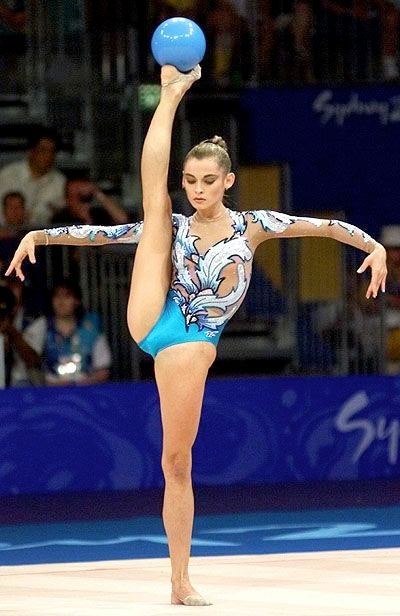
Sydney 2000 Olympics.
When the music begins, she either flies, the apparatus becoming one with her body, or she falls, letting her fears get the best of her. There are no second chances. The rhythmic gymnast either owns the floor or lets it own her.
In this sport, there are many talented, hard-working athletes who want to become champions. And even though many train to be the ones to represent their country, with their national flag on their leotard, only a handful live the Olympic dream. And only one rhythmic gymnast of that handful will get the gold. Competition is always in the air as they work.
And no one knows whether all that work and sacrifice will pay off. There’s no guarantee that the rhythmic gymnast will succeed. There’s always the lingering fear that all those hours of training and dedication are wasted.
So why do rhythmic gymnasts bother? Why go through all of this if there’s zero guarantee for success, and everyone labels us as “ribbon dancers”? Rhythmic gymnastics is addictive in a strange way. For me, there’s something magical and irreplaceable about being on the competition carpet, the feeling of an apparatus in my hands. And when I’m performing, it’s the feeling of being a circus acrobat, a dancer, a gymnast, and a bird all in one, moving to the music.
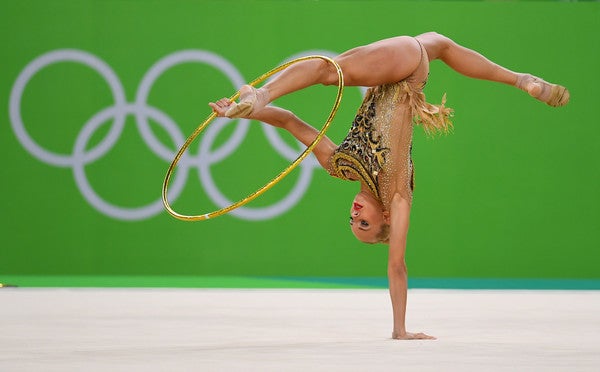
Yana Kudravtseva, youngest rhythmic gymnastics world champion.
When I’m in my element, training or performing, everything else is irrelevant. Absorbed in the world of rhythmic gymnastics, it’s easy to forget the sport that controls my life is just ribbons and rhinestones to everyone else.
